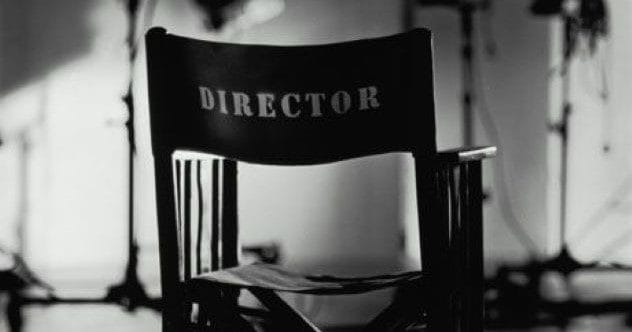The New Hollywood era, exploding around 1967, shifted the film industry’s focus to younger audiences and contemporary popular culture. While names like Spielberg and Coppola dominate discussions, numerous other directors significantly impacted this cinematic revolution. Let’s spotlight ten unsung heroes who helped define New Hollywood.
Jack Hill
Dubbed the “Howard Hawks of exploitation filmmaking,” Jack Hill gained recognition at UCLA, connecting with Roger Corman. This led to directing horror films in the 1960s, including Blood Bath (1966) and Spider Baby (1967).
Hill transitioned into Blaxploitation, frequently collaborating with Pam Grier. His films critiqued genre flaws while empowering African American voices. Even today, his work adds a Shakespearean level of pathos to characters, trading excessive sex and violence for nuanced human struggles.
John Milius
John Milius, famed for contributions to scripts like Apocalypse Now (1979) and early Dirty Harry (1972) drafts, often clashed with Hollywood’s mainstream politics due to his anarchic views. Yet, this outlook suited the antihero mold prevalent during that era.
While his screenwriting credits are extensive, Milius also excelled as a director. His personal touch and focus on human vulnerability shine in films like Dillinger (1973) and Big Wednesday (1977). Later, he co-created the HBO series Rome (2005–2007).
Herbert Ross
Herbert Ross began as a dancer before transitioning to film direction in 1969 with Goodbye, Mr. Chips. As a versatile director in New Hollywood, Ross worked with stars like Barbara Streisand and Richard Dreyfuss.
Similar to Old Hollywood studio players, Ross’s style is more adaptable, making his contributions dynamic yet sometimes subtle. He also directed The Last of Sheila (1973), written by Stephen Sondheim.
Jerry Schatzberg
Despite the great films emerging from New York in the 1970s, Jerry Schatzberg’s name is often overlooked. Starting as a photographer, he soon directed independent features, collaborating with Faye Dunaway and Gene Hackman.
Schatzberg played a key role in Al Pacino’s rise, directing him in The Panic in Needle Park (1971) and Scarecrow (1973), similar to Coppola’s Godfather films and Lumet’s Serpico. These films highlight the naturalism and humanity of that era’s cinema.
Bob Rafelson
Bob Rafelson, initially successful as an executive producer on Easy Rider (1969), directed films that legitimized actors previously seen in B movies. This includes Karen Black in Five Easy Pieces (1970) and Arnold Schwarzenegger in Stay Hungry (1976). He also co-created and directed The Monkees’ show.
George Roy Hill
Like Herbert Ross, identifying a distinct “George Roy Hill Picture” can be challenging. Known for musicals and comedies in the 1960s, Hill gained fame with Butch Cassidy and the Sundance Kid in 1969, starring Paul Newman and Robert Redford.
Hill collaborated with both actors again, either together in The Sting (winning him an Oscar) or separately in The Great Waldo Pepper (1975) and Slap Shot (1977). His ability to embed counterculture rebellion within genre films, whether in science fiction like Slaughterhouse-Five (1972) or comedies like Funny Farm (1988), underscores his underrated talent.
Alan J. Pakula
Alan J. Pakula profoundly shaped modern crime cinema, starting with producing To Kill a Mockingbird in 1962. His influence is as underrated as it is deeply felt.
Pakula’s films like Klute (1971) and The Parallax View (1974) captured Nixon-era paranoia. He directly addressed such themes in All the President’s Men (1976), a cornerstone of investigative journalism films. His impact extended into the 1990s, influencing filmmakers who specialized in his developed style.
Melvin Van Peebles
Melvin Van Peebles should be celebrated not only among Black filmmakers but also in independent cinema. After being hired by a major studio, he self-financed Sweet Sweetback’s Baadasssss Song (1971) due to a lack of studio support, despite his previous film, Watermelon Man (1970), being successful.
His films rival prestigious social issue films and lowbrow comedies. His theatrical roots inform his visual style, allowing him to experiment with the medium reminiscent of theater, amplified by cinematic techniques.
Hal Ashby
Hal Ashby, while not entirely unknown, often goes underappreciated. His peak success aligns with the 1970s, with personal struggles impacting his later films. Harold and Maude (1971), The Last Detail (1973), and Shampoo (1975) offer microcosmic dreamscapes providing solace against contemporary issues.
Ashby’s films feel more discovered than devised. Starting as an editor, his films capture small moments to articulate larger themes. Roger Ebert noted in his Being There (1979) review that “a movie is exactly what it shows us, and nothing more,” highlighting Ashby’s skill in showing just enough to speak volumes.
Elaine May
Elaine May stands as one of cinema’s most unsung directors. She began in the 1960s as half of the comedy duo Nichols and May, achieving significant acclaim before Hollywood beckoned.
Following Mike Nichols’ The Graduate (1967), May directed the equally biting The Heartbreak Kid (1972), preceded by A New Leaf (1971) and followed by Mikey And Nicky (1976), which strained her relationship with major studios. Despite critical and box office success, May was labeled difficult due to misogynistic hierarchies. To date, she has directed only four feature films, all of which hold significant merit.
These ten directors, though not always household names, left an indelible mark on the New Hollywood era. Their unique visions and contributions shaped a transformative period in film history.
Which of these directors resonates most with you? Leave your comment below!










